ADDITIONAL EXERCISES from VIKRAM PUBLICATION ( ANDHRA PUBLICATION) CURRENT ELECTRICITY for Class 12
| Class 12 | PHYSICS |
| Chapter | CURRENT ELECTRICITY |
| VIKRAM PUBLICATION ( ANDHRA PUBLICATION) | ADDITIONAL EXERCISES |
| Medium | English |
| Academic Year | 2023-2024 |
Question 1
The earth's surface has a negative surface charge density of 10−9Cm−2. The potential difference of 400 kV between the top of the atmosphere and the surface results (due to the low condutivity of the lower atmosphere) in a current of only 1800 A over the entire globe. if there were no mechanism of sustaining atmospheric electric field, how much time (roughly) would be required to neutralise the earth's surface (This never happens in parctice there is a mechanism to replenish electric charges, namely the continual thunderstorms and lightning in different parts of the globe). (Radius of earth =6.3×106m)View SolutionQuestion 4
Two wires of equal length, one of aluminium and the other of copper have the same resistance. Which of the two wire is lighter? Hence explain why aluminium wires are preferred for overhead power cables. (ρAl=2.63×10−8Ωm,ρCu=1.72×10−8Ωm Relative density of Al = 2.7 of Cu = 8.9)View SolutionQuestion 10
Choose the correct alternative:
(a) Alloys of metals usually have (greater/less) resistivity than that of their consituent metals.
(b) Alloys usually have much (lower/higher) temperature coefficients of resistance than pure metals.
The resistivity of the alloy manganin is nearly independent of/increases rapidly with increase of temperature.
The resistivity of a typical insulator (e.g., amber) is greater than that of a metal by a factor of the order (1022/1023).View SolutionQuestion 15
Figure shows a potentiometer with a cell of 2.0 V and internal resistance 0.40Ω maintain a potential drop across the resistor wire AB. A standard cell which maintains a constant emf of 1.02 V (for very moderate currents upto a few mA) gives a balances point at 63.3 cm length of the wire. To ensure very low currents drawn from the standard cell, a very high resistance of 600Ω is put is series with it, which is shortedd close to the balance point. The standard cell is then replaced by a cell of unknown emf ε and the balance point found similarly, turns out to be at 82.3 cm length of the wire.
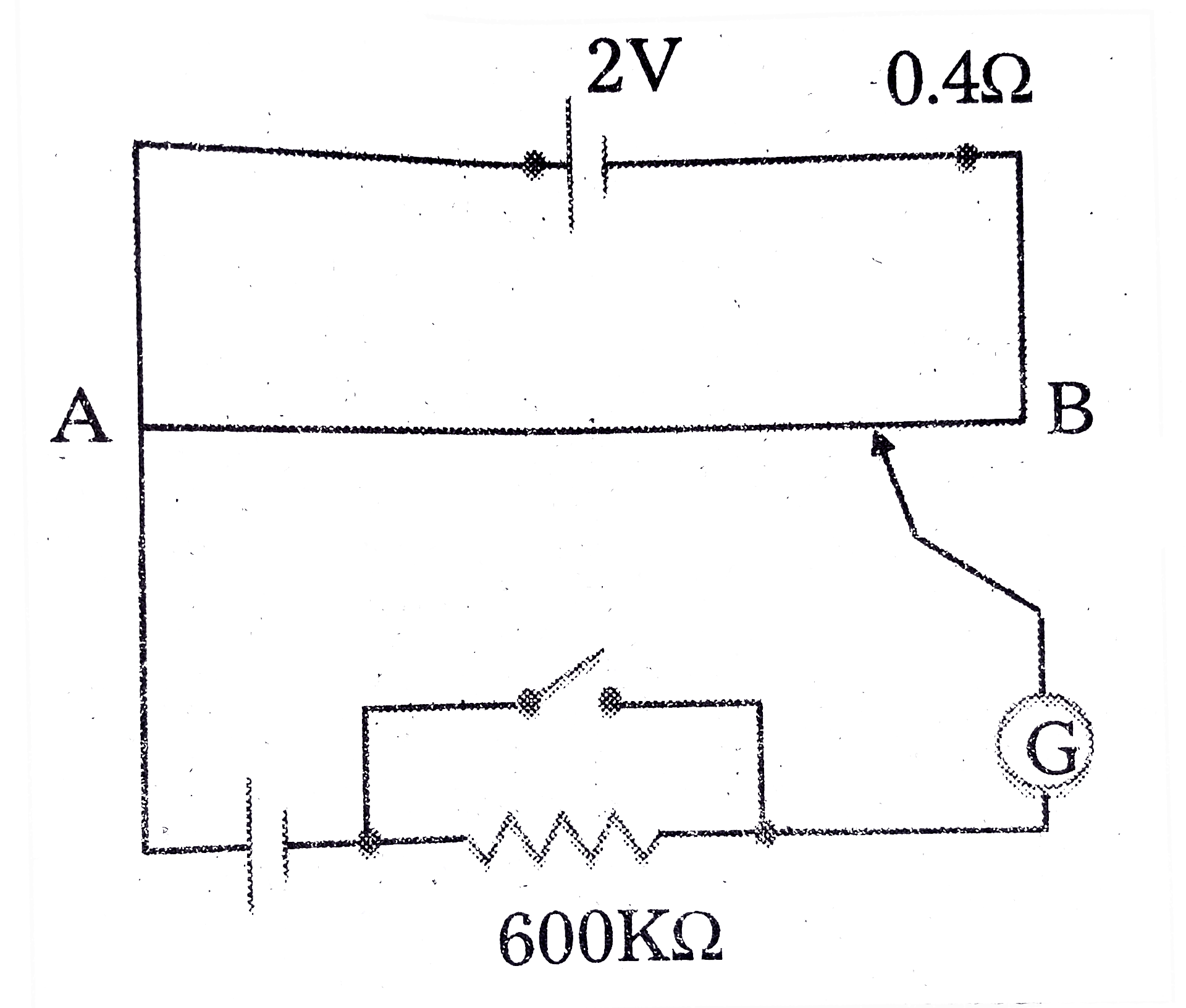
What is the value ε ?View SolutionQuestion 16
Figure shows a potentiometer with a cell of 2.0 V and internal resistance 0.40Ω maintain a potential drop across the resistor wire AB. A standard cell which maintains a constant emf of 1.02 V (for very moderate currents upto a few mA) gives a balances point at 63.3 cm length of the wire. To ensure very low currents drawn from the standard cell, a very high resistance of 600Ω is put is series with it, which is shortedd close to the balance point. The standard cell is then replaced by a cell of unknown emf ε and the balance point found similarly, turns out to be at 82.3 cm length of the wire.

What purpose does the high resistance of 600 k Ω have?View SolutionQuestion 17
Figure shows a potentiometer with a cell of 2.0 V and internal resistance 0.40Ω maintain a potential drop across the resistor wire AB. A standard cell which maintains a constant emf of 1.02 V (for very moderate currents upto a few mA) gives a balances point at 63.3 cm length of the wire. To ensure very low currents drawn from the standard cell, a very high resistance of 600Ω is put is series with it, which is shortedd close to the balance point. The standard cell is then replaced by a cell of unknown emf ε and the balance point found similarly, turns out to be at 82.3 cm length of the wire.
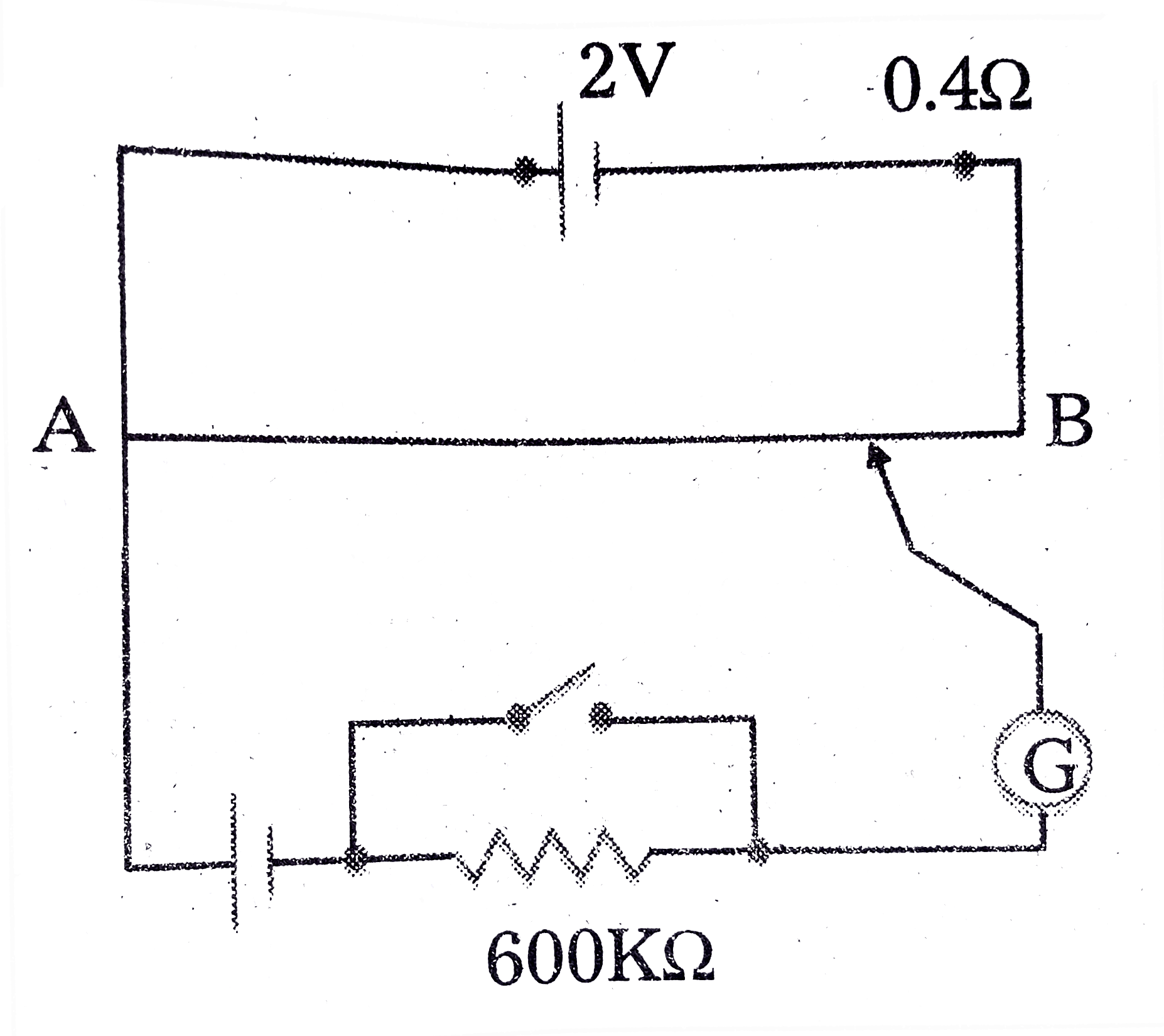
Is the balance point affected by this high resistance?View SolutionQuestion 18
Figure shows a potentiometer with a cell of 2.0 V and internal resistance 0.40Ω maintain a potential drop across the resistor wire AB. A standard cell which maintains a constant emf of 1.02 V (for very moderate currents upto a few mA) gives a balances point at 63.3 cm length of the wire. To ensure very low currents drawn from the standard cell, a very high resistance of 600Ω is put is series with it, which is shortedd close to the balance point. The standard cell is then replaced by a cell of unknown emf ε and the balance point found similarly, turns out to be at 82.3 cm length of the wire.
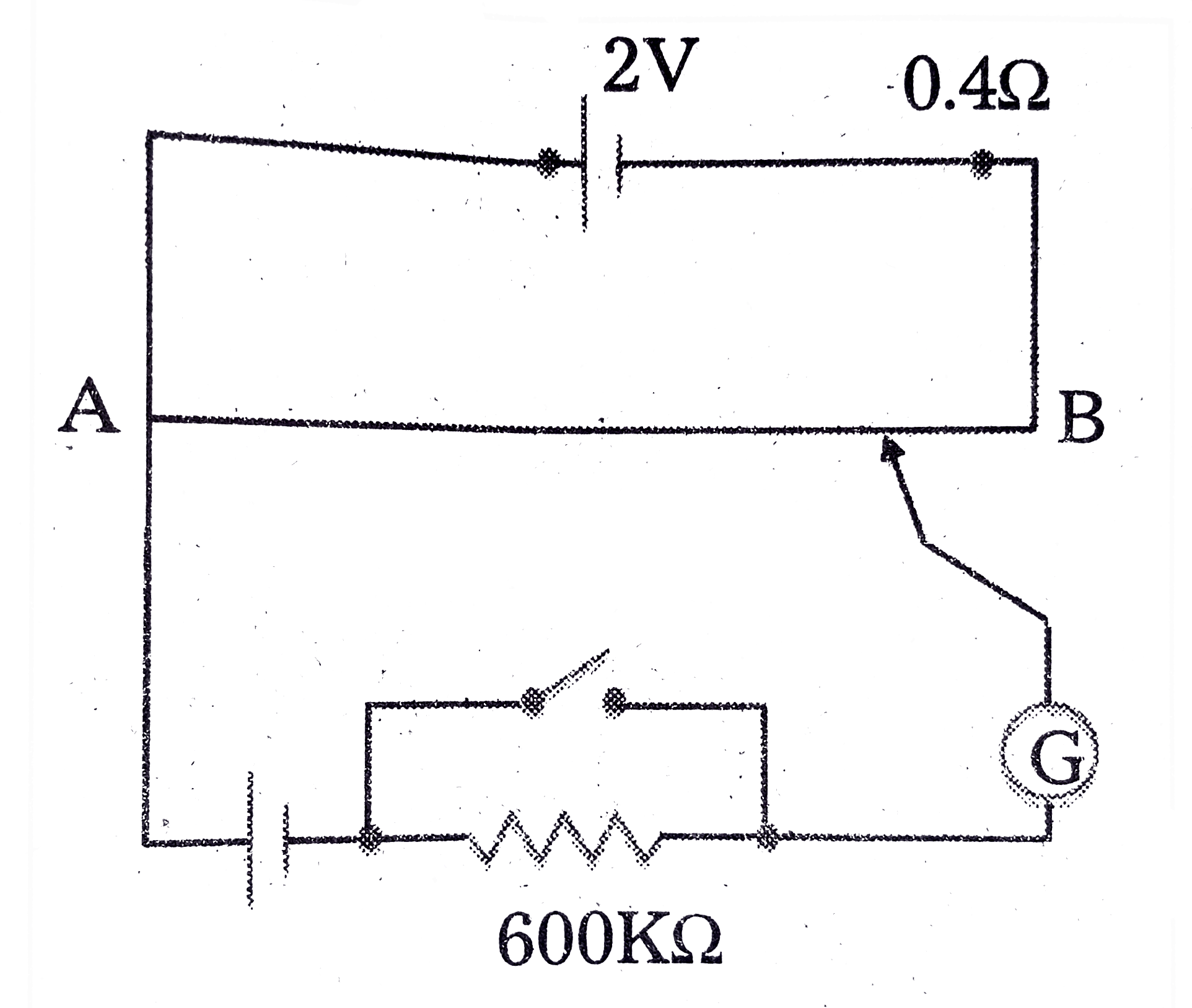
Is the balance point affected by the internal resistance of the driver cell.View SolutionQuestion 19
Figure shows a potentiometer with a cell of 2.0 V and internal resistance 0.40Ω maintain a potential drop across the resistor wire AB. A standard cell which maintains a constant emf of 1.02 V (for very moderate currents upto a few mA) gives a balances point at 63.3 cm length of the wire. To ensure very low currents drawn from the standard cell, a very high resistance of 600Ω is put is series with it, which is shortedd close to the balance point. The standard cell is then replaced by a cell of unknown emf ε and the balance point found similarly, turns out to be at 82.3 cm length of the wire.
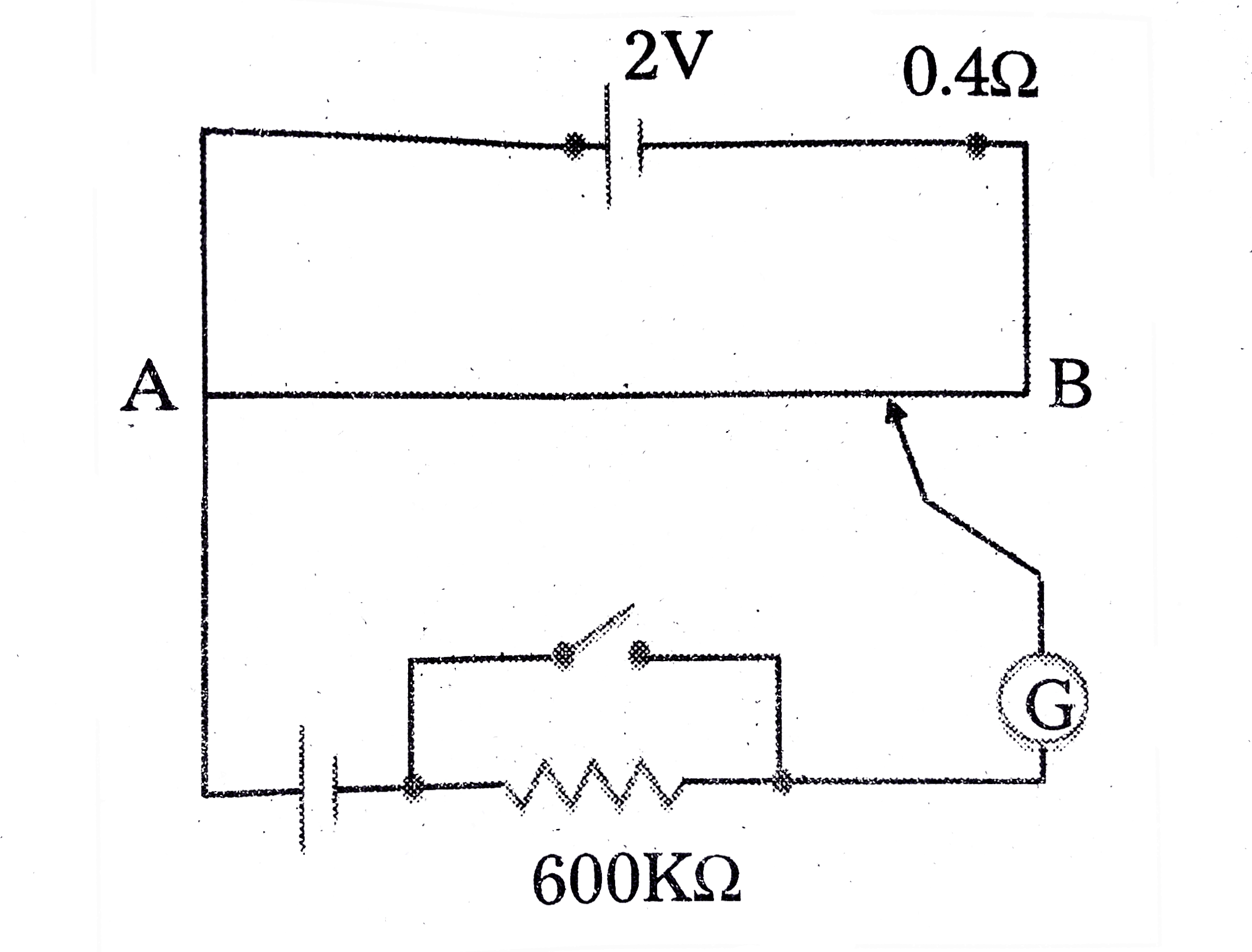
Would the method work in the above situation if the driver cell of the potentiometer had an emf of 1.0 V instead of 2.0 V?View SolutionQuestion 20
Figure shows a potentiometer with a cell of 2.0 V and internal resistance 0.40Ω maintain a potential drop across the resistor wire AB. A standard cell which maintains a constant emf of 1.02 V (for very moderate currents upto a few mA) gives a balances point at 63.3 cm length of the wire. To ensure very low currents drawn from the standard cell, a very high resistance of 600Ω is put is series with it, which is shortedd close to the balance point. The standard cell is then replaced by a cell of unknown emf ε and the balance point found similarly, turns out to be at 82.3 cm length of the wire.

Would the circuit work well for determining an extermely small emf, say of the order of a few mV (such as the typcial emf a thermo-couple)? if not, how will you modify the circuit?View SolutionQuestion 21
Figure shows a potentiometer circuit for comprasion of two resistances. The balance point with a standard resistor R=10.0Ω is found to be 58.3 cm, while that with the unknown resistance X is 68.5 Cm. determine the value of X. What might you do if you failed to find a balance point with the given cell of emf ε ?
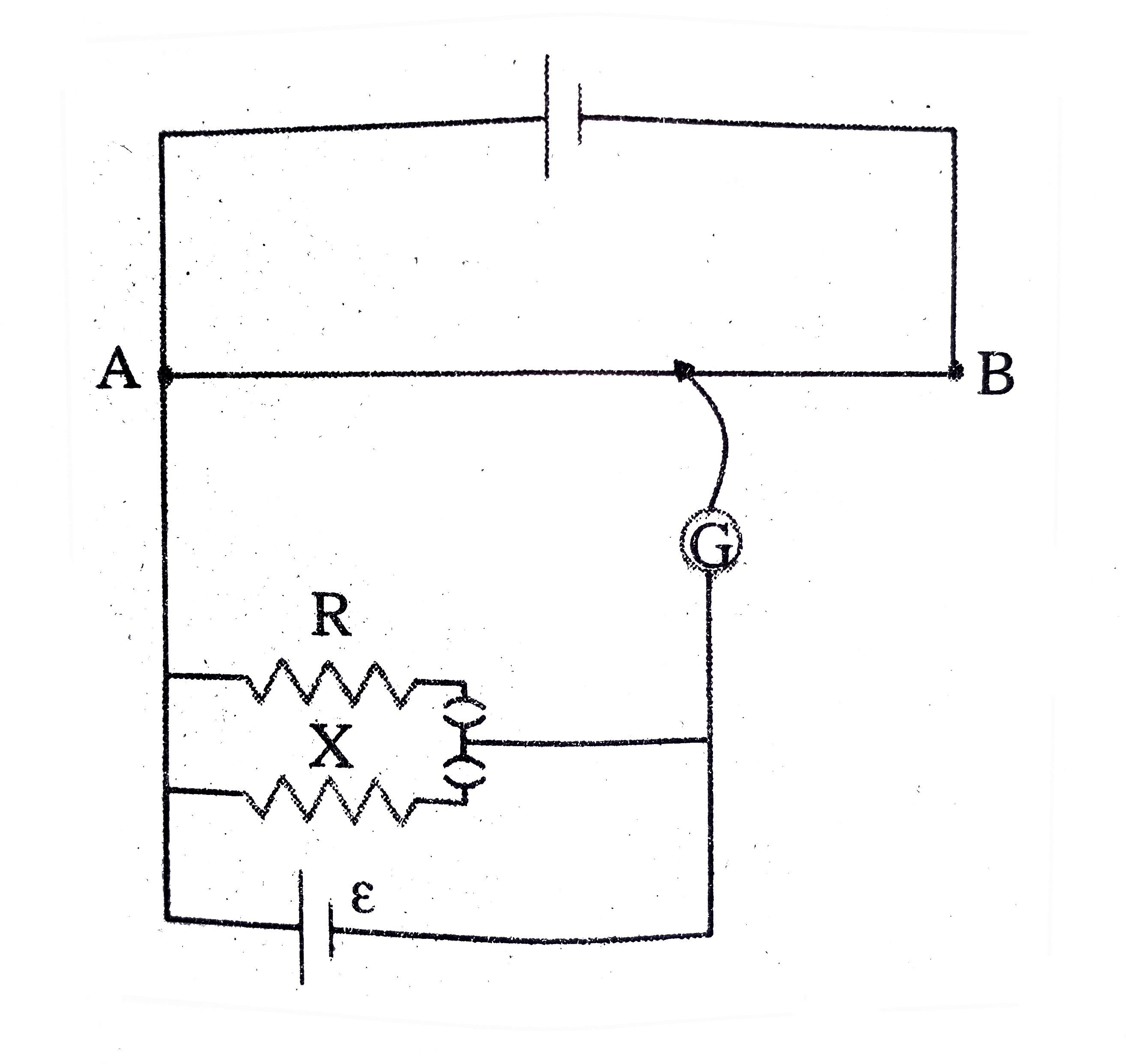 View Solution
View SolutionQuestion 22
Figure shows a 2.0 V potentiometer used for the determination of internal resistance of a 1.5 V cell. The balance point of the cell in open circuit is 76.8 cm. when a resistor of 9.5Ω is used in the external circuit of the cell, the balance point shifts to 64.8 cm length of the potentiometer wire. Determine the internal resistance of the cell.
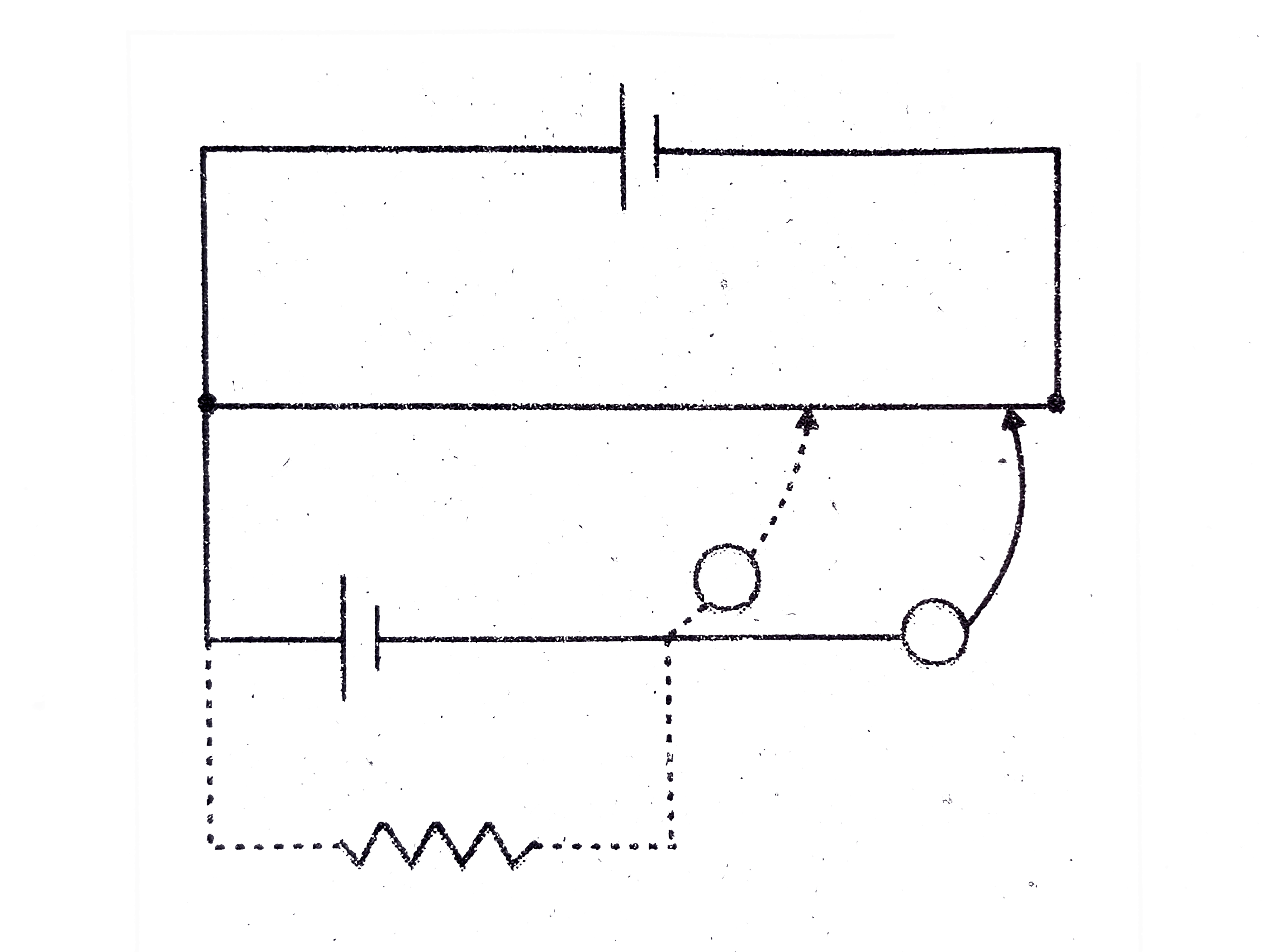 View Solution
View Solution


